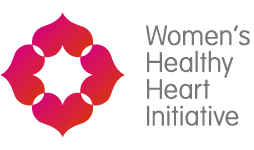When we say that heart disease is largely a preventable disease, it means you can greatly decrease your risk by engaging in a healthy lifestyle. One of the best preventions is a balanced diet.
While no one diet alone can cure disease, food in many ways is our best medicine against illness. Food nourishes; it provides the nutrients—the building blocks—we need for growth, development and maintenance. When the right nutrients are provided, metabolic processes are fine, but when we lack certain nutrients or overload our systems with non-nutrient foods, we can damage healthy bodily function and increase our chances of developing disease.
So with all the noise about miracle foods and fad diets, what foods actually constitute a heart-healthy diet?
First of all, it’s important to note that how much you eat is just as important as what you eat. Obesity is a prime risk for heart disease and accurate portion size is the foundation upon which healthy eating is built. The general rule for a heart-healthy diet is to ensure that your plate is divided into half vegetables, one quarter protein and one quarter whole grains.
Vegetables and fruits should make up the bulk of your diet. Rich in dietary fibre and relatively low in calories, these are the foods that contain the wealth of vitamins and minerals needed for health and wellness. Whole fruits and vegetables are best, and watch for added sugars in frozen, canned or pureed fruits, and added fat or sodium in frozen and canned vegetables.
Carbohydrates are a necessary part of the diet as well, but they should be eaten in the form of whole grains as opposed to refined grains. Whole grains are rich in dietary fibre, a plant-derived carbohydrate that passes through the system undigested. This helps regulate blood sugars, improve colon health, keep you full longer, and may also lower inflammation and cholesterol.
When it comes to protein, it can be beneficial to substitute plant proteins for some animal proteins to reduce fat and cholesterol intake. Animal protein sources are often high in saturated fat, so leaner cuts are best. While you need fat in your diet to help absorb fat-soluble vitamins and minerals, fat is highly caloric. It is also important to choose healthier fats as eating saturated and trans fats may raise unhealthy LDL cholesterol and lower healthy HDL cholesterol. This results in an increased risk of high blood pressure, narrowing of the arteries, heart attack and stroke. Stick to monounsaturated fats (e.g. olive oil, avocado, almonds) and polyunsaturated fats (e.g. flaxseed, walnuts, cold water fish such as salmon, mackerel, sardines) which have been shown to improve blood cholesterol levels.
It’s also very important to reduce both your sodium and sugar intake. Too much sodium contributes to high blood pressure and too much sugar is associated with obesity, and diabetes, which are both risk factors for heart disease. The easiest way to control salt and sugar is to avoid pre-packaged foods and make your meals from whole foods found in nature. Of course, such a plan is not always realistic, so become a nutrition label expert—once you understand what ingredients are going into your foods you will make wiser choices.
At the end of the day, food surrounds us and the pace of our lives makes it easy to fall into bad eating habits. One of the best things you can do for your heart is to reframe the way you think about food. You can feed your health or you can feed potential disease.

